The Importance of User-Friendly Website Design in the Digital World

In the current era, where the internet has become an inseparable part of our daily lives, merely having a website is not enough.
The success of a business or organization in the online space heavily depends on how users interact with their website.
This is where the concept of User-Friendly Website Design comes into play.
But what exactly does user-friendly mean, and why is it so important? A user-friendly website is one where users can easily and without any confusion find the information they need, achieve their goals, and have an enjoyable experience.
This includes factors such as #EaseOfUse, #Accessibility, #Speed, and #VisualAppeal.
A well-designed website not only increases visitor satisfaction but also has a direct impact on the Conversion Rate, site SEO, and ultimately, your business success.
If users cannot easily navigate your site, find the content they are looking for, or complete necessary forms, they will quickly leave the site and look for other options.
This is an explanatory and educational aspect that shows why you should invest significantly in the user experience (UX) design of your site.
In fact, a user-friendly website is not just an option, but a necessity to make your mark in today’s competitive market.
Are you tired of your company’s website not meeting your expectations? With Rasaweb, design a professional website that truly represents your business.
✅ Increased acquisition of new customers and sales leads
✅ Increased credibility and trust in your brand among your audience
⚡ Get a free website design consultation!
Foundations of User Experience and User Interface
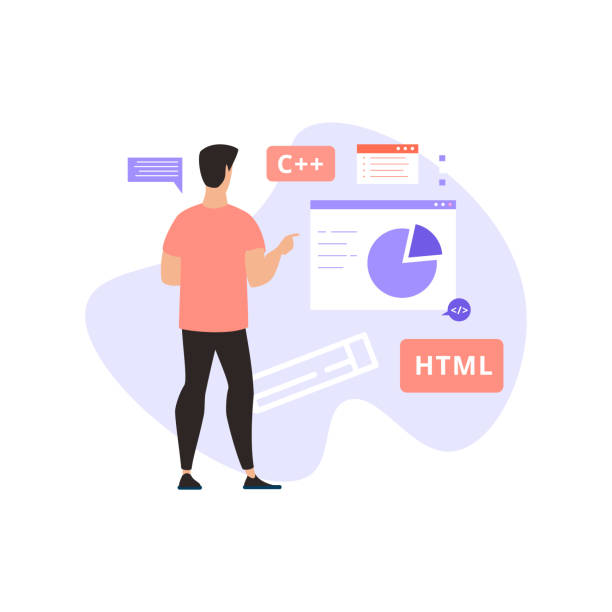
When it comes to designing a website with an excellent user experience, two key concepts, UI (User Interface) and UX (User Experience), arise, which are often mistakenly used interchangeably.
User Experience (UX) refers to the user’s overall feeling when interacting with a product or system.
This concept is much broader than just visual appearance and includes aspects such as ease of use, efficiency, and the user’s emotional satisfaction.
In contrast, User Interface (UI) deals with the visual and interactive elements that the user interacts with; from buttons and menus to images and fonts.
UI is a part of UX that relates to the look and feel of a website.
A website with a beautiful user interface but a poor user experience is like a luxurious sports car that is undrivable.
UX principles focus on Usability, Accessibility, and Intuitiveness.
A user-friendly website should be usable for everyone, including people with disabilities.
The design should be such that the user can quickly interact with it and perform their tasks without the need for training or guidance.
This is a specialized and fundamental approach that ensures your site not only looks good but is also practically efficient and meets user needs.
Information Structure and Smart Navigation in a Website
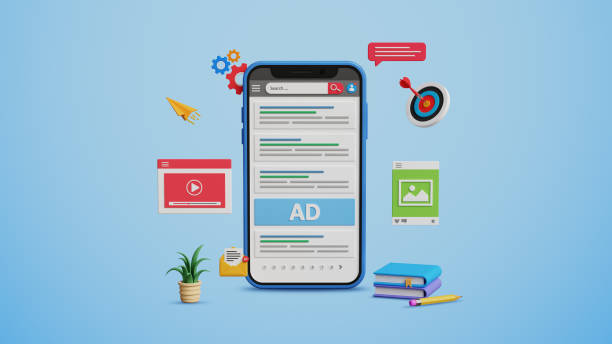
One of the most important aspects of UX principles in website design is how content is organized and how easily users can access it, known as Information Architecture (IA).
Information architecture refers to the art and science of organizing and labeling content on a website in a way that is understandable and findable.
If a website’s information structure is inappropriate, users will get lost among pages and won’t be able to reach their destination.
Smart and clear navigation is the lifeline of any user-friendly website.
Main menus, submenus, breadcrumbs, and powerful search functionality are all tools that help the user understand their location on the site and easily move to different sections.
Guiding users through a logical path improves their experience and prevents confusion.
| Element | Description | Impact on User Experience |
|---|---|---|
| Content Organization | Logical and hierarchical categorization of information. | Reduces confusion, faster information retrieval. |
| Navigation Systems | Clear menus, internal links, breadcrumbs. | Easy site movement, understanding user’s current location. |
| Labeling Systems | Using understandable and familiar words and phrases for links and titles. | Increases understanding of content and element functionality. |
| Search Systems | Efficient search capability with filters and suggestions. | Quick access to specific content needed by the user. |
Each page should have a clear purpose, and this purpose should be understandable through the navigation path.
Also, using familiar terminology and avoiding specialized and ambiguous terms in titles and links is of high importance.
A strong information structure is the cornerstone of a usable and successful website and greatly contributes to optimizing user experience.
Visual Aesthetics and Its Impact on User Interaction

In addition to functionality, the visual appearance of a website also plays a vital role in optimizing user experience and attracting an audience.
Visual Aesthetics of your website is the first thing that captures a user’s attention and can have a profound impact on their perception of your brand.
Colors, fonts, images, icons, and the overall page layout all play a role in creating a pleasant and inviting space.
A harmonious and attractive visual design is not only appealing but also helps in better understanding the content and increasing user trust.
Colors evoke specific emotions and should be chosen to match your brand’s message and identity.
Color psychology is very important in website design.
Choosing the right font (readability and aesthetics), using high-quality and relevant images, and arranging white space so that the page doesn’t look cluttered, are important principles of visual design.
A good visual design can be engaging and attractive, encourage users to stay on the site longer, and drive them to take your desired action (e.g., purchase or registration).
This part of design not only focuses on aesthetics but also indirectly impacts creating a customer-centric site, as it conveys a sense of professionalism and credibility to the user.
Do you know that a poor corporate website costs you many opportunities daily? Solve this problem forever with professional corporate website design by Rasaweb!
✅ Create a powerful and reliable image for your brand
✅ Targeted attraction of new customers and increased sales
⚡ [Get Free Website Design Consultation]
Responsive Design and Mobile-First Approach
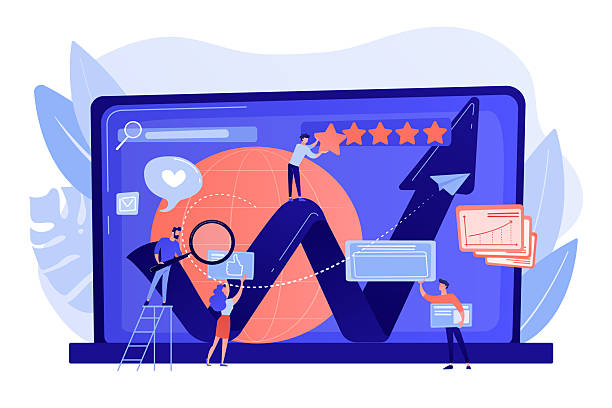
Given the increasing use of mobile phones for internet access, creating a customer-centric site is impossible without considering Responsive Design and the Mobile-First approach.
Responsive design means that your website should automatically adjust its size and layout to fit the screen size of the user’s device, whether it’s on a desktop, tablet, or mobile.
This ensures that the user experience is optimal and consistent across all devices.
The “Mobile-First” approach goes even further; in this approach, website design begins first for mobile devices with screen size and bandwidth limitations, and then gradually develops for larger screens.
This method ensures that the core functionality and content of the site are optimally accessible to mobile users, as they are often on the go and need quick and easy access.
Google also considers mobile-friendliness as one of its most important ranking factors, and this is important news for every webmaster.
Ignoring responsive design not only leads to losing a large portion of the mobile audience but also negatively affects your site’s ranking in search results.
In today’s world, a website that cannot provide a seamless and optimized user experience across all devices is doomed to fail.
This is an educational and crucial aspect for every web designer.
Page Load Speed and Optimal Website Performance

One of the most important factors in effective user interface design is website loading speed.
In today’s world, where users quickly access information, their patience for slow websites is decreasing.
Research shows that most users leave a website that takes more than 2-3 seconds to load.
This directly affects the Bounce Rate and ultimately, the site’s ranking in search engines.
A website that loads quickly provides a better user experience, increases user satisfaction, and encourages them to stay and explore more on the site.
Several factors influence loading speed: image optimization (compression without quality loss), using a CDN (Content Delivery Network) for fast content delivery from the nearest server, reducing unnecessary code (CSS and JavaScript), leveraging browser caching, and choosing suitable hosting.
These are technical tips that must be carefully observed by web developers and designers.
Continuously checking site speed with tools like Google PageSpeed Insights or GTmetrix is essential.
Performance optimization is not just a technical issue, but a fundamental pillar of user experience.
A website that is available to users with high speed and optimal performance not only keeps them satisfied but also effectively helps achieve business goals.
This is an analytical approach for continuous improvement.
Usability Testing and User Feedback
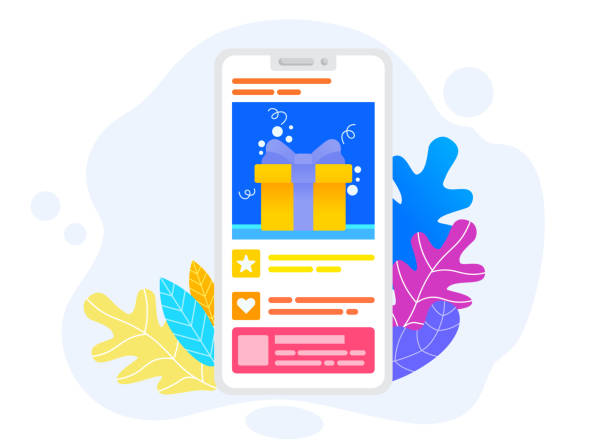
Perhaps the question arises: how can we be sure that the website we have designed is truly a highly usable site? The answer lies in Usability Testing and gathering feedback from real users.
Designing a user-friendly website is an iterative process, not a one-time task.
Even the best designers cannot anticipate all potential problems or weaknesses from the end-user’s perspective.
Usability testing allows you to observe real users interacting with your website and identify difficult, confusing, or inefficient points.
There are various methods for conducting these tests, including in-person tests, remote tests, A/B testing, surveys, and feedback forms.
This is thought-provoking content: how do we ensure our website is optimized? By using data from these tests, you can make necessary changes and improve your design.
Direct user feedback provides the most valuable information for improving user experience.
This process is practical guidance for iterative design improvement.
| Test Method | Description | Advantages |
|---|---|---|
| Usability Testing | Observing real users while performing specific tasks on the website. | Discovering unexpected problems, observing natural user behavior. |
| A/B Testing | Comparing two versions (A and B) of a page to determine the better version. | Data-driven decision-making for optimizing specific elements. |
| Surveys and Feedback Forms | Directly collecting user opinions and suggestions through questionnaires. | Gaining broad insights, identifying user needs. |
| Heatmap Analysis | Graphical display of areas where users click or scroll most. | Understanding interaction patterns, identifying design weaknesses. |
Website analytics data can also reveal user behavior patterns and highlight potential weaknesses.
This continuous process ensures that your website is always improving and keeps pace with evolving user needs.
Content Strategy and Audience Engagement in a Website
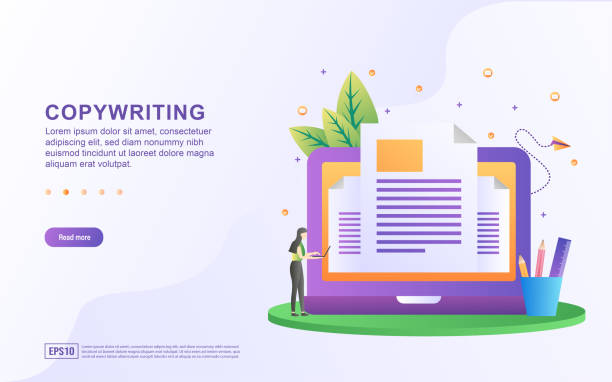
In addition to visual and technical design, website content plays a very important role in user experience and UX-friendly websites.
Content should not only be relevant and valuable but also be structured and presented in a way that is engaging and understandable for the user.
A strong content strategy includes producing high-quality content, optimizing it for search engines, and presenting it in a user-friendly manner.
This includes using clear and concise language, breaking text into short paragraphs, using headings and subheadings, bullet points, and multimedia elements such as images, videos, and infographics.
Engaging content can keep users on the site longer and increase their engagement rate.
For example, short explanatory videos or analytical infographics can present complex information in an engaging and digestible way.
Also, interactive content such as surveys, quizzes, or calculators can enrich the user experience.
This educational and analytical approach helps you not only attract audiences but also convert them into loyal customers.
Producing updated and regular content also helps maintain user return and improve site ranking in search engines, ensuring your site always looks fresh and dynamic.
Does your current website build the trust that potential customers should have in your business? If the answer is no, it’s time to get your professional and impactful corporate website with Rasaweb.
✅ Fully customized design tailored to your brand identity
✅ Increased lead generation and business credibility in the eyes of customers⚡ Contact us for a free consultation!
The Impact of User-Friendly Design on SEO

Sometimes it’s thought that website usability enhancement and Search Engine Optimization (SEO) are two separate categories, whereas in reality, they are closely linked and complement each other.
Google and other search engines are increasingly emphasizing user experience (UX)-related factors for ranking websites.
A user-friendly website automatically covers many SEO factors as well.
For example, site loading speed (as mentioned earlier) is an important ranking factor.
Mobile-friendly and responsive websites also have an advantage in mobile search results.
User dwell time and Bounce Rate, which are directly influenced by user experience, are important signals for search engines.
If users quickly leave your site (high bounce rate), Google interprets it as an indicator of low quality or irrelevance of the site to the user’s search.
Clear navigation and a logical information structure help search engine crawlers better understand and index your site’s content.
High-quality, user-friendly content not only attracts users but also naturally receives more backlinks, which are very valuable for SEO.
This is very important news for website managers and digital marketers, indicating that investing in UX is, in fact, also investing in SEO.
This is a specialized aspect that shows how improving user experience leads to improved visibility in search engines and ultimately drives more organic traffic to your site.
Future Trends and Continuous Evolution in Web Design
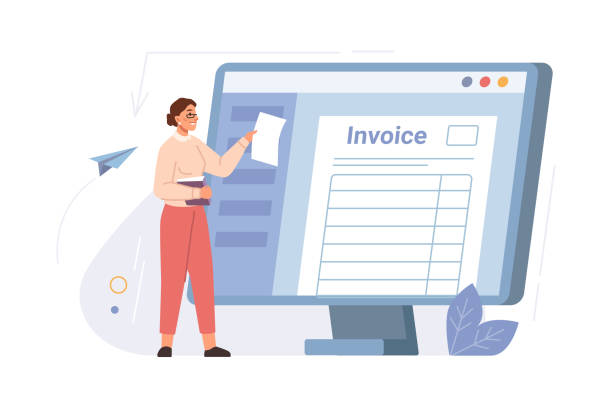
The world of user-friendly website design is constantly changing and evolving.
What is known as “best practice” today might become obsolete in the near future.
Therefore, staying aware of new trends and continuous evolution in this field is essential to maintain your website’s competitiveness.
Artificial Intelligence (AI) and Machine Learning are becoming powerful tools in user experience design; from personalizing content based on user behavior to smart chatbots and voice assistants.
Designing for Voice UI and Screenless Interactions is also growing, which means the increasing importance of understanding how users interact with websites via voice commands.
Microinteractions, which include small visual details or haptic feedback (like a button changing color when clicked), also play a significant role in increasing user satisfaction and creating a sense of attention to detail.
Virtual Reality (VR) and Augmented Reality (AR) also have great potential to revolutionize user experience in certain specific industries.
This is an analytical and engaging look at what the future holds.
Your website should be dynamic and keep pace with the latest standards and user expectations.
This approach allows you to always be one step ahead and provide an innovative and unparalleled user experience.
Frequently Asked Questions
And other advertising services of Rasaweb Advertising Agency:
Smart SEO: A combination of creativity and technology to increase website traffic through Google Ads management.
Smart UI/UX: A combination of creativity and technology for digital branding by utilizing real data.
Smart Conversion Rate Optimization: A combination of creativity and technology to boost sales by utilizing real data.
Smart Marketplace: A professional solution for campaign management focusing on precise audience targeting.
Smart UI/UX: Professional optimization for user interaction using personalized user experience.
And hundreds of other services in internet advertising, advertising consultation, and organizational solutions.
Internet Advertising | Advertising Strategy | Advertorials
Resources
User-Friendly Website Design Principles
UI and UX Design Principles
User-Friendly Website Design Principles
Guide to UI and UX Design Principles
? To reach the peaks of success in the digital world, Rasaweb Afarin Digital Marketing Agency is by your side, offering services such as website design with a modern user interface and professional optimization.
📍 Tehran, Mirdamad Street, next to Bank Markazi, Southern Kazeroon Alley, Ramin Alley, No. 6



